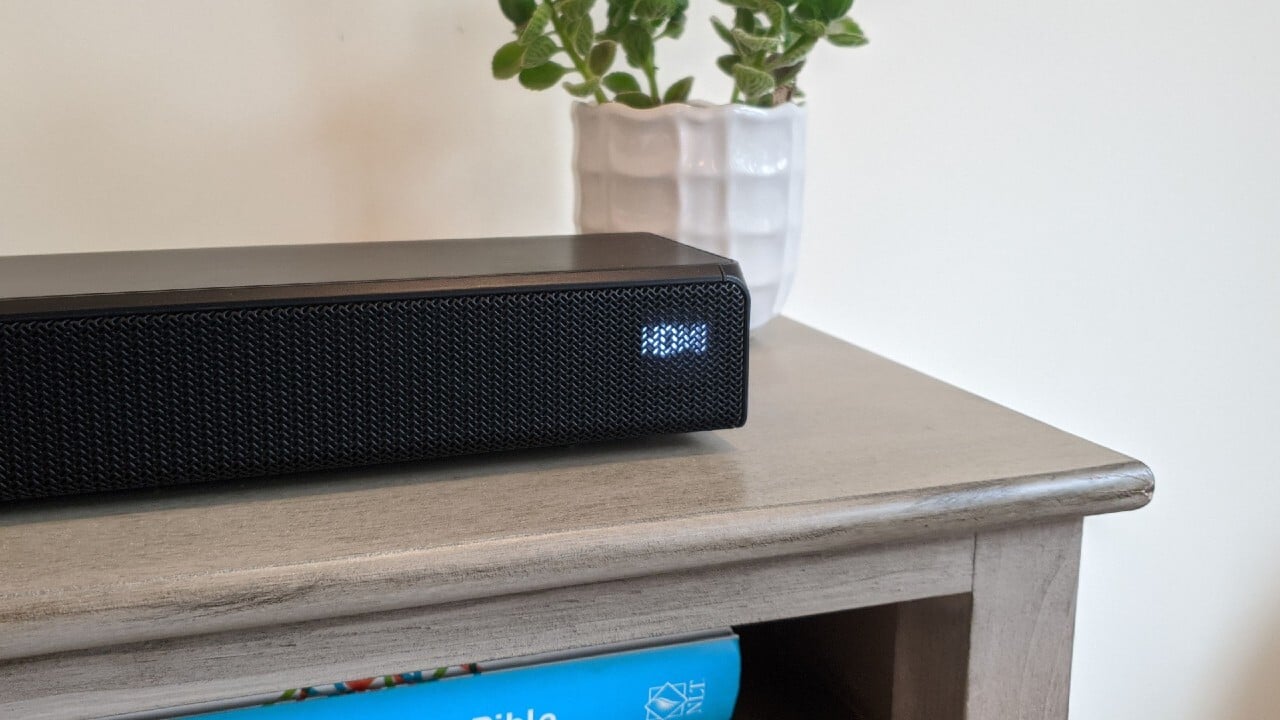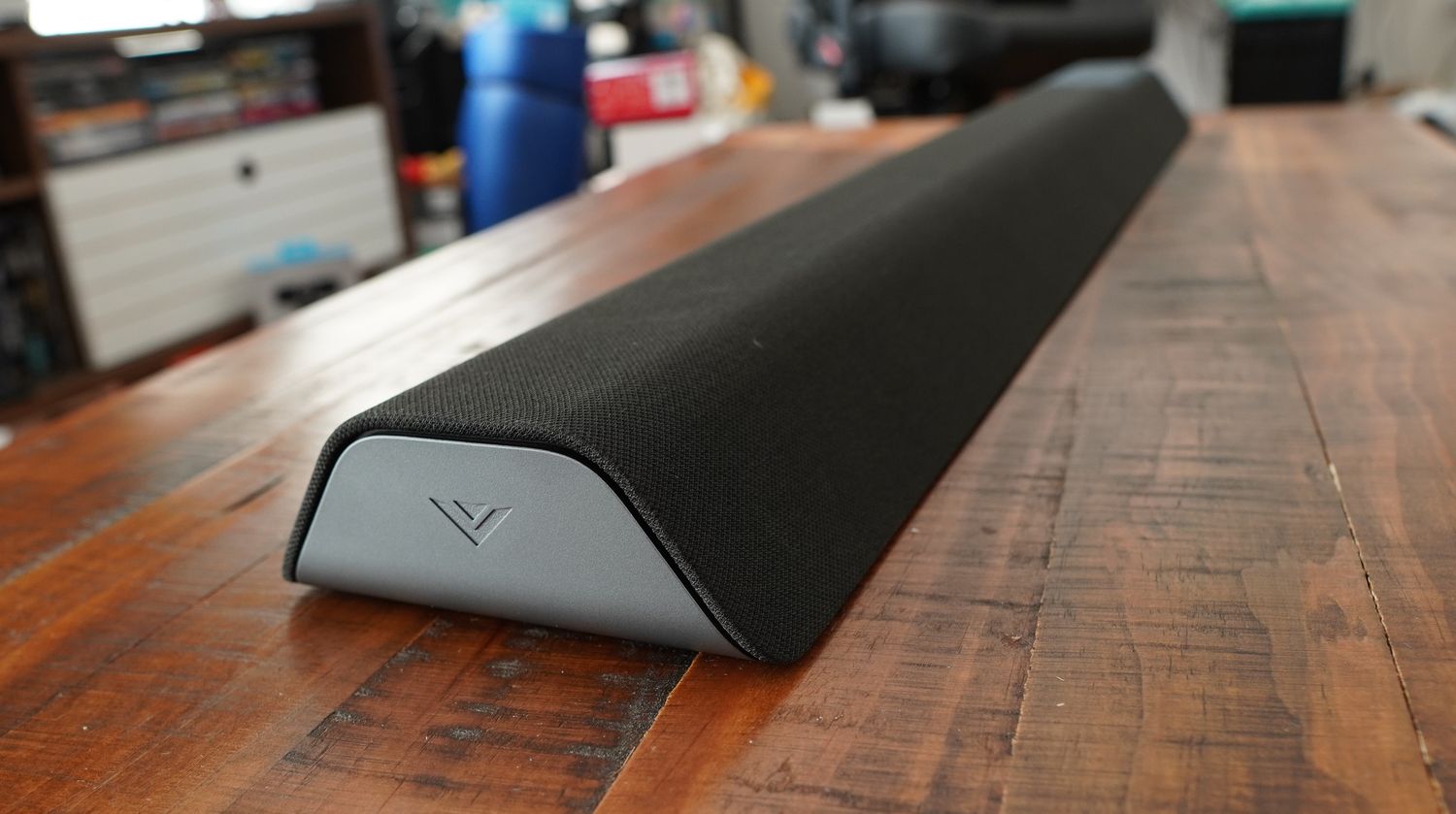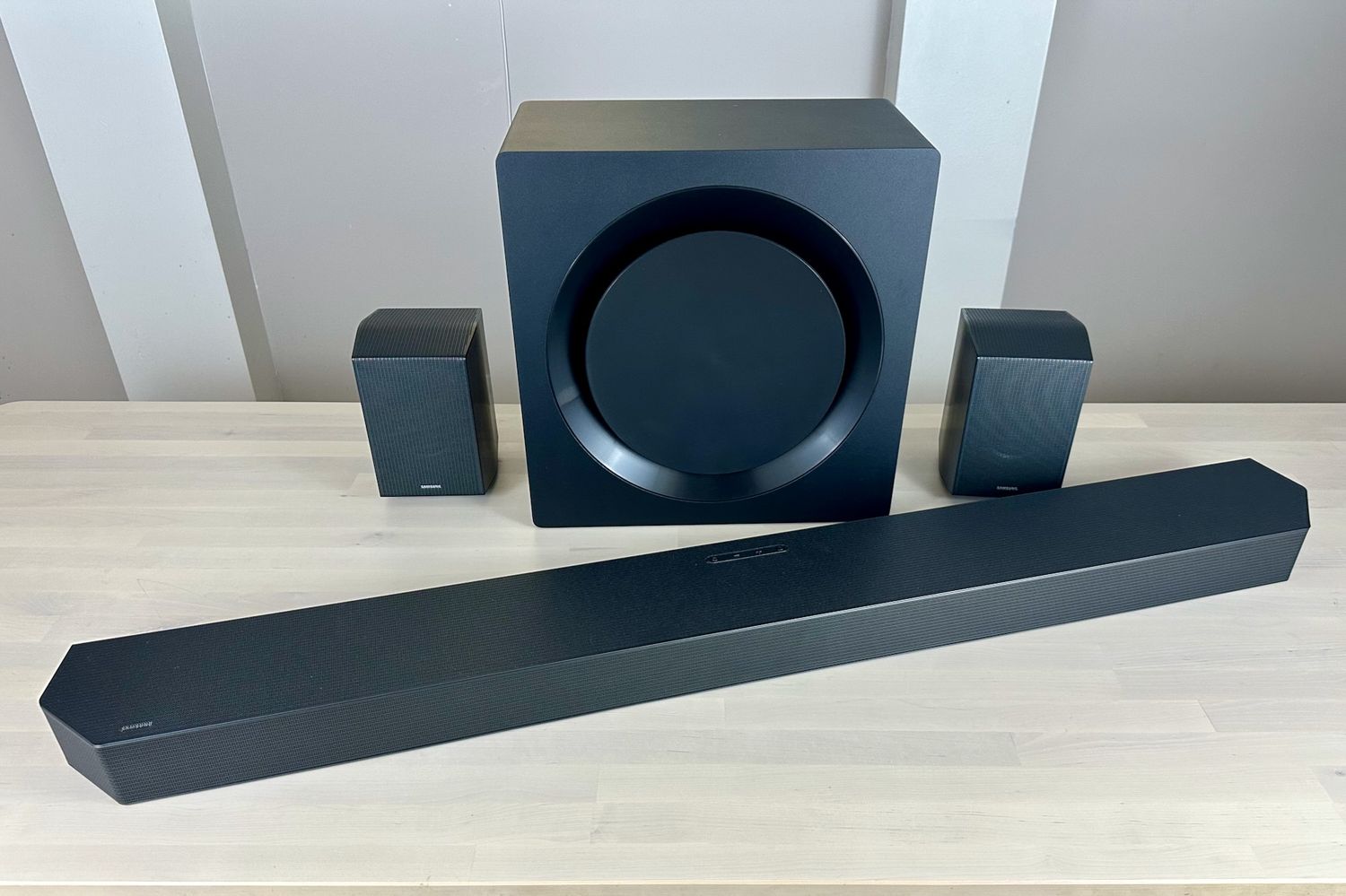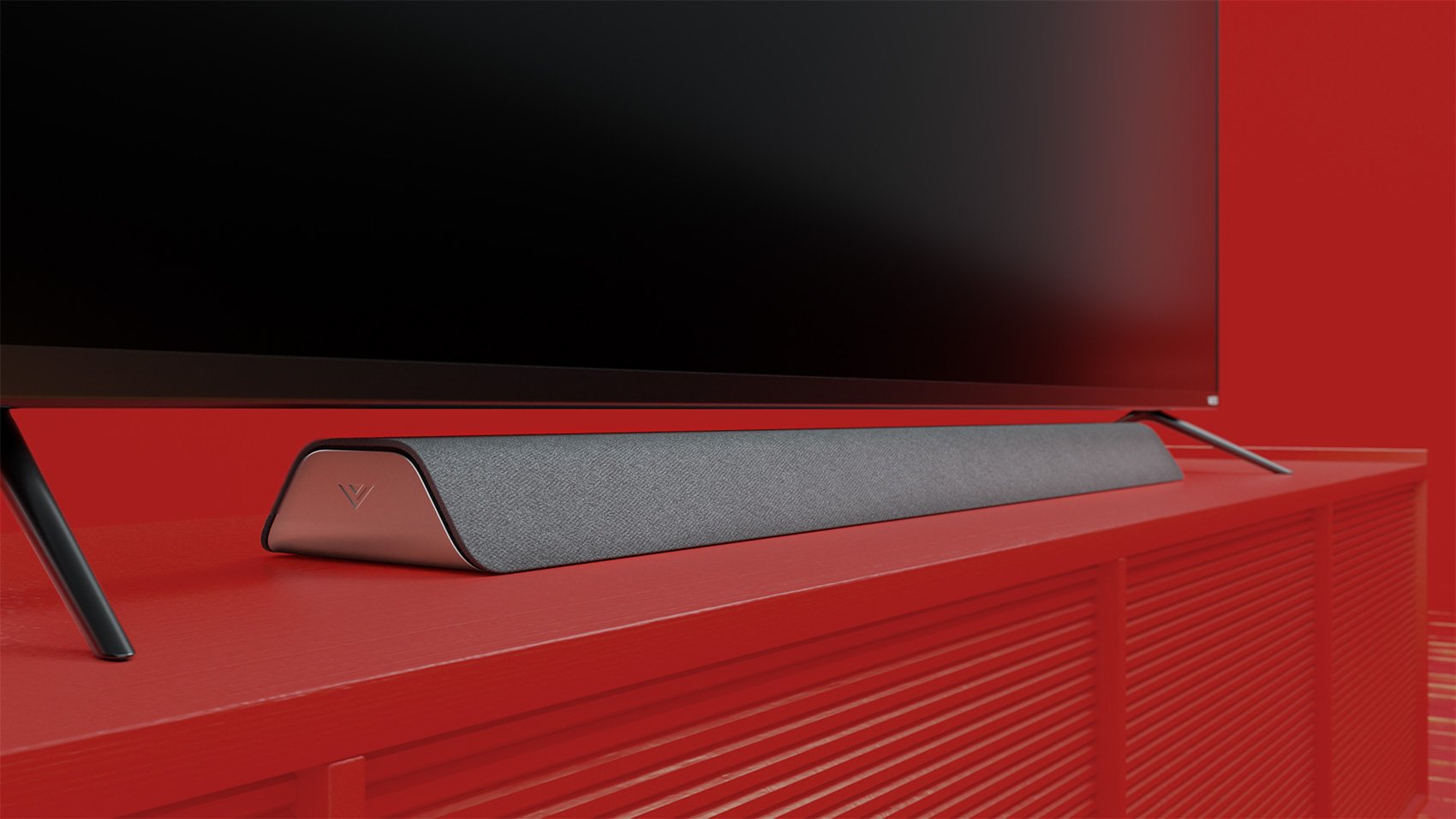Home>Production & Technology>Sound Bar>Why Is My Sound Bar Not Loud
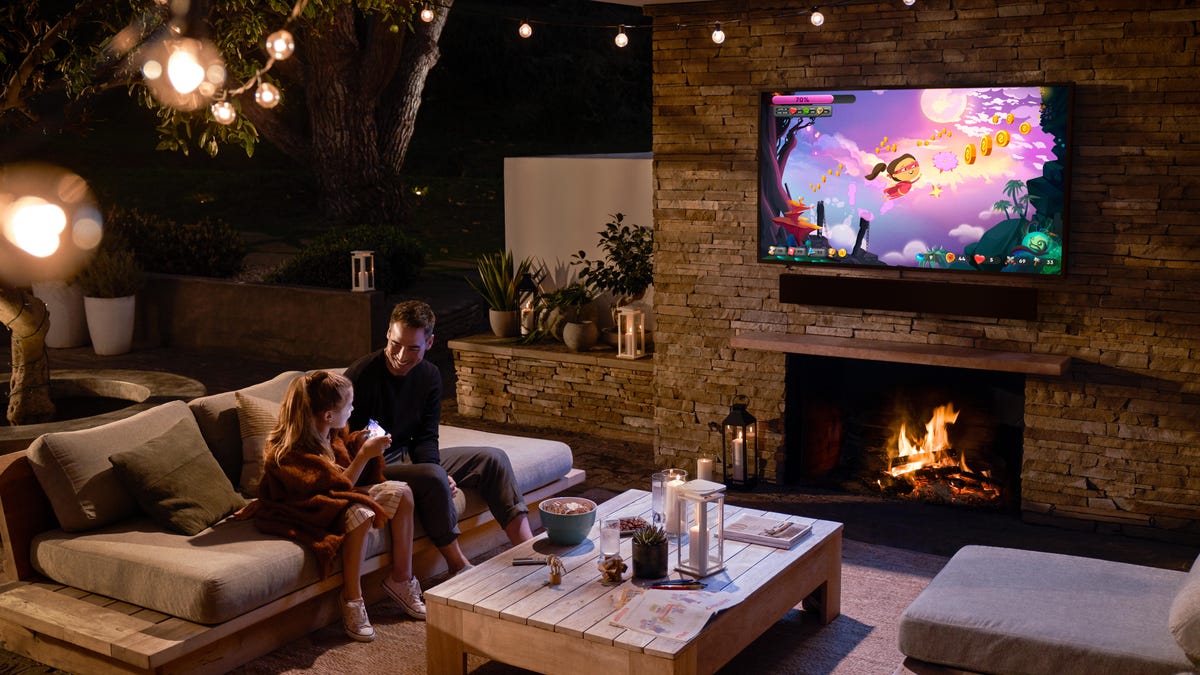

Sound Bar
Why Is My Sound Bar Not Loud
Published: December 27, 2023
Discover why your sound bar may not be loud and learn how to troubleshoot the issue. Enhance your audio experience with simple tips and tricks.
(Many of the links in this article redirect to a specific reviewed product. Your purchase of these products through affiliate links helps to generate commission for AudioLover.com, at no extra cost. Learn more)
Table of Contents
Introduction
Sound bars have become increasingly popular in recent years as a convenient and cost-effective solution to enhance the audio experience for TVs and home entertainment systems. However, it can be frustrating when your sound bar is not delivering the desired level of volume. There can be several reasons why your sound bar is not loud enough, ranging from simple settings adjustments to more complex issues with the hardware or firmware.
In this article, we will explore some common troubleshooting steps to help you identify and rectify the issue when your sound bar is not loud enough. Whether you’re a tech-savvy individual looking to optimize your sound bar’s performance or a casual user who wants to enjoy immersive audio, these tips will be valuable in resolving the problem.
Before diving into the troubleshooting steps, it’s important to note that sound bars come in different models and brands, each with its own unique features and settings. Therefore, the exact steps may vary slightly depending on the specific make and model of your sound bar.
Now, let’s delve into the various factors that could be causing your sound bar’s volume to be lower than desired and the solutions to address them.
Check the Volume Settings
One of the first things to do when your sound bar is not loud enough is to check the volume settings. It may seem obvious, but sometimes the volume can accidentally get turned down or muted, causing a decrease in audio output. Here are some steps to follow:
- Remote Control: Double-check the volume controls on both your sound bar’s remote control and your TV’s remote. Make sure the volume is turned up and not muted on both devices.
- On-Screen Display: Some sound bars have on-screen displays that show the current volume level. If your sound bar has this feature, navigate to the volume settings on the screen and ensure it is set to an appropriate level.
- Audio Modes: Many sound bars offer different audio modes, such as “music” or “movie,” which might affect the volume output. Experiment with different modes to see if it makes any difference in the volume level.
- Enhancements: Some sound bars have additional sound enhancement features, like virtual surround sound or bass boost. Check if any of these settings are enabled and adjust them accordingly.
- Equalizer Settings: Certain sound bars allow you to customize the sound using equalizer settings. If available, try adjusting the equalizer settings to increase the volume output.
If none of these steps resolve the issue, move on to the next troubleshooting method.
Adjust Sound Bar Placement
The placement of your sound bar can significantly impact its audio performance. If your sound bar is not loud enough, consider adjusting its placement to optimize the sound quality. Here are some factors to consider:
- Distance: Ensure that the sound bar is positioned at an optimal distance from the listening area. If it’s too far away, the sound may appear faint. If it’s too close, it can create a distorted and overwhelming experience. A general rule of thumb is to place the sound bar around one to two feet in front of your TV.
- Height: The height of the sound bar also plays a role in the audio projection. Ideally, the sound bar should be positioned at ear level for the best sound dispersion. This can be achieved by using a wall mount or placing it on a stand or shelf.
- Obstructions: Ensure that there are no physical obstructions blocking the sound bar, such as curtains, furniture, or other objects. These obstructions can hinder the sound waves from reaching your ears, resulting in reduced volume and clarity.
- Room Acoustics: Consider the acoustic properties of the room. Hard surfaces like tile or hardwood floors can cause sound to bounce and create echoes, while soft surfaces like carpets or curtains can absorb sound. Experiment with adding rugs or curtains to improve the acoustics and enhance the volume output.
- Surroundings: Take into account the layout and surroundings of the room. If the sound bar is placed near a wall or corner, it can amplify the bass frequencies and make the sound seem louder. On the other hand, if it’s placed in an open area, the sound may appear more dispersed. Adjust the placement accordingly to achieve the desired volume.
By making these adjustments, you can optimize the sound bar placement and potentially resolve the issue of low volume.
Update Sound Bar Firmware
Outdated firmware can sometimes cause issues with the performance of your sound bar, including low volume. Firmware updates often include bug fixes and improvements that can enhance the overall functionality and audio output. Here’s how to update the firmware of your sound bar:
- Check for Updates: Start by checking the manufacturer’s website or the user manual to see if there are any available firmware updates for your specific sound bar model. Look for the latest firmware version and any instructions on how to update.
- Download the Firmware: If there is an update available, download the firmware file onto your computer or a USB flash drive, depending on the manufacturer’s instructions. Make sure to follow the correct file format and naming conventions specified by the manufacturer.
- Connect the Sound Bar: Connect the USB flash drive or your computer to the sound bar using the appropriate ports or cables, as instructed by the manufacturer.
- Access Firmware Update Menu: Depending on your sound bar model, you may need to navigate through the settings menu on the sound bar or use the remote control to access the firmware update menu. Follow the on-screen instructions to initiate the update process.
- Wait for the Update: Allow the firmware update process to complete. This may take a few minutes, so be patient and avoid interrupting the process.
- Restart the Sound Bar: Once the firmware update is finished, restart the sound bar as instructed by the manufacturer. This will ensure that the new firmware is properly implemented.
Updating the firmware of your sound bar can often resolve various issues, including low volume problems. Remember to always follow the manufacturer’s instructions carefully when performing a firmware update.
Verify Audio Output Settings
Incorrect audio output settings can affect the volume of your sound bar. It’s essential to ensure that the audio settings on both your sound bar and connected devices are properly configured. Here’s what you can do to verify and adjust the audio output settings:
- TV Settings: Start by checking the audio output settings on your TV. Access the TV’s settings menu and navigate to the audio or sound settings. Ensure that the audio output is set to “external speakers” or “external audio system” instead of the TV’s built-in speakers.
- Source Device Settings: If you have connected external devices, such as a cable/satellite box, gaming console, or Blu-ray player, make sure their audio settings match the requirements of your sound bar. Check the audio output settings on these devices and select “Dolby Digital” or “PCM” for optimal compatibility.
- Audio Format: Some sound bars support specific audio formats, such as Dolby Atmos or DTS:X. If your sound bar is compatible with these formats, ensure that the audio output settings on your source devices are set to output audio in those formats. This will enable you to maximize the sound quality and volume potential of your sound bar.
- HDMI-ARC: If your sound bar is connected to the TV through HDMI-ARC (Audio Return Channel), make sure both the TV and the sound bar are set to the correct HDMI-ARC input. Additionally, ensure that the TV’s HDMI-CEC (Consumer Electronics Control) feature is enabled, allowing for seamless communication between the devices.
- Audio Sync: In some cases, the audio and video may be out of sync, resulting in a perception of low volume. Check if your sound bar or TV has an audio sync feature to adjust the delay between the audio and video signals. This can help align the audio with the visuals and ensure a better listening experience.
Verifying and adjusting the audio output settings can play a significant role in resolving volume issues with your sound bar. Make sure to consult the user manuals of your sound bar and connected devices for specific instructions on adjusting the audio settings.
Check External Devices and Connections
When experiencing low volume with your sound bar, it’s important to inspect the external devices and connections to identify any potential issues. Here are some steps you can take:
- Cables and Connections: Ensure that all cables connecting your sound bar to the TV and other devices are securely plugged in. Loose or faulty connections can result in reduced volume or intermittent audio. Check for any signs of damage or wear on the cables and replace them if necessary.
- Input Selection: Confirm that the sound bar is set to the correct input source. If you have multiple input options, such as HDMI, optical, or Bluetooth, make sure you have selected the appropriate input channel that is connected to the device you are using.
- Device Compatibility: Different devices may have varying audio output capabilities. Check if the connected devices support audio output through external speakers or sound bars. Additionally, ensure that the audio settings on the connected devices are properly configured for external audio output.
- Audio Delay: If you notice a delay in the audio when using external devices, such as a gaming console or Blu-ray player, check if there is a setting to adjust the audio delay. Fine-tuning this setting can help synchronize the audio with the visuals, resulting in a better overall experience.
- Interference: If you are using wireless connections, such as Bluetooth or Wi-Fi, interference can impact the volume and audio quality. Try moving any nearby wireless devices or routers away from the sound bar to minimize signal interference.
- Power Supply: Ensure that your sound bar and connected devices have a stable power supply. Power fluctuations or inadequate power can affect the performance of the sound bar, leading to low volume. Consider using surge protectors or other power management solutions to regulate the power supply.
By checking the external devices and connections, you can pinpoint any issues that may be causing the low volume problem with your sound bar and take appropriate steps to resolve them.
Reset Sound Bar to Factory Settings
If you have tried various troubleshooting methods and are still experiencing low volume with your sound bar, performing a factory reset may help resolve the issue. Resetting the sound bar to its original factory settings can eliminate any software glitches or incorrect settings that could be affecting the volume output. Here’s how you can reset your sound bar:
- Check the User Manual: Consult the user manual or the manufacturer’s website to find specific instructions on how to perform a factory reset for your sound bar model. The process may vary depending on the brand and model.
- Physical Button: Some sound bars have a physical reset button located on the device itself. Press and hold this button for a few seconds until you see an indicator light or hear a confirmation sound, indicating that the reset process has initiated.
- Remote Control: In some cases, you can initiate the factory reset using the sound bar’s remote control. Navigate through the settings menu on the remote and look for an option to reset or restore the sound bar to its factory settings.
- Confirmation Prompt: Once you have initiated the factory reset, you may be prompted to confirm your decision. Follow the on-screen instructions or use the remote control to confirm the reset. Be aware that a factory reset will erase any customized settings and return the sound bar to its original state.
- Power Cycle: After the factory reset is complete, turn off the sound bar and unplug it from the power source. Wait for a few minutes before plugging it back in and turning it on. This power cycle can help ensure that the reset is fully implemented.
Note that performing a factory reset will revert your sound bar to its default settings, erasing any personalized configurations you’ve made. It’s a last-resort troubleshooting step when all other methods have failed to resolve the low volume issue.
Consult the Manufacturer or Customer Support
If you have exhausted all the troubleshooting steps and your sound bar is still not producing the desired volume, it may be time to seek assistance from the manufacturer or customer support. They have knowledgeable representatives who can provide specific guidance and solutions tailored to your sound bar model. Here’s what you can do:
- Manufacturer’s Website: Visit the manufacturer’s website and navigate to the support or customer service section. Look for any FAQs, troubleshooting guides, or user forums related to sound bar issues. Often, there are valuable resources available that can help address common problems.
- Contact Customer Support: If you can’t find a solution on the website, reach out to the manufacturer’s customer support team. Contact them via email, phone, or live chat, depending on the available options. Provide detailed information about your sound bar model, the issue you’re facing, and the steps you have already taken to troubleshoot.
- Warranty Coverage: If your sound bar is still under warranty, inform the customer support representative about the warranty status. They may provide further assistance or advise on how to proceed, which could involve repairs, replacements, or refund options.
- Service Center: In some cases, the manufacturer may recommend visiting an authorized service center for a professional diagnosis and repair. They can assess any hardware-related issues and determine if there are any components that need to be repaired or replaced.
- Keep Documentation: Throughout your communication with the manufacturer or customer support, keep records of your conversations, including emails, support ticket numbers, or any case reference numbers provided. This documentation can be helpful for future reference and as proof of contact.
Remember, the manufacturer or customer support is the best resource when it comes to addressing any complex or persistent issues with your sound bar. They have the expertise and knowledge to guide you towards a resolution.
Conclusion
When your sound bar is not loud enough, it can be frustrating, but there are several troubleshooting steps you can take to address the issue. By checking the volume settings, adjusting the sound bar’s placement, updating the firmware, verifying audio output settings, checking external devices and connections, and even performing a factory reset, you can often resolve the problem and enjoy the desired volume output from your sound bar.
However, if you’ve tried all the troubleshooting steps and are still experiencing low volume, don’t hesitate to reach out to the manufacturer or customer support for further assistance. Their expertise can provide specific guidance tailored to your sound bar model and help you find a solution.
Remember that sound bars come in different models and brands, each with its own unique features and settings. It’s essential to consult the user manual and follow the manufacturer’s instructions for your specific sound bar when implementing the troubleshooting steps mentioned in this article.
Lastly, maintaining your sound bar and performing regular updates can help prevent volume issues in the future. Keep an eye out for firmware updates from the manufacturer and ensure that your sound bar is positioned correctly and has a proper power supply.
With the proper troubleshooting steps, patience, and assistance from the manufacturer or customer support, you can overcome the challenge of low volume and enjoy an immersive audio experience with your sound bar.


